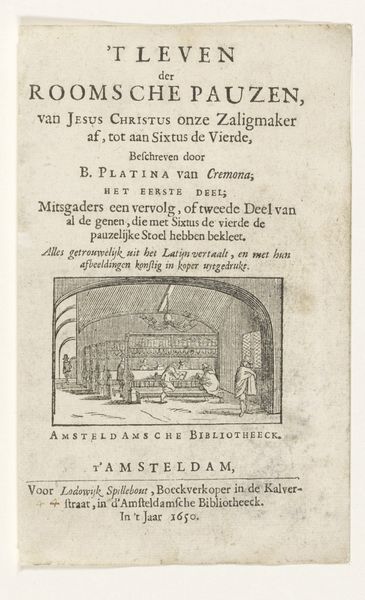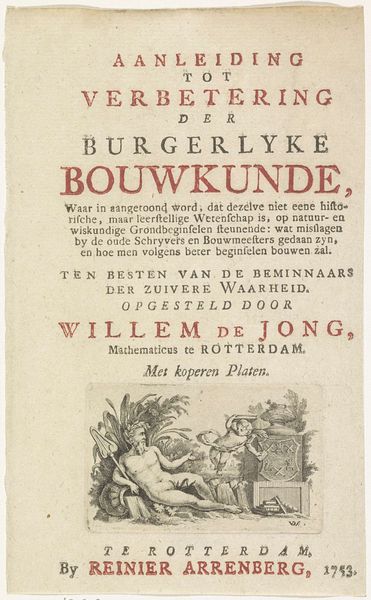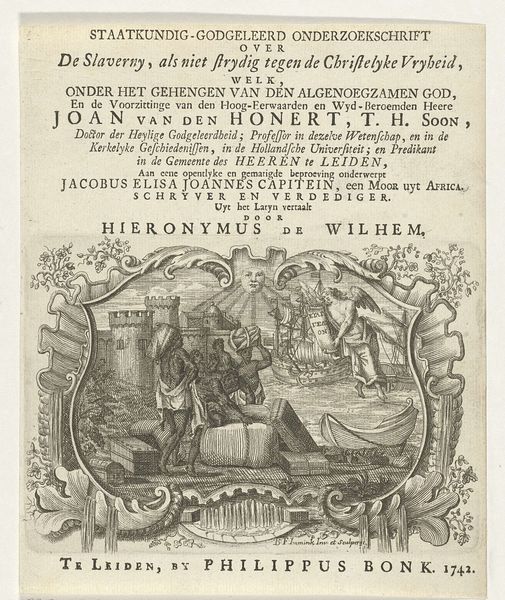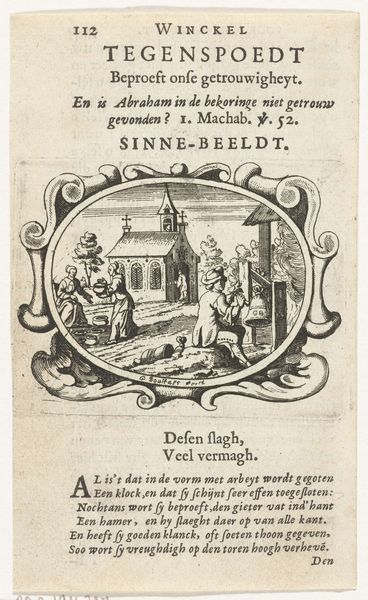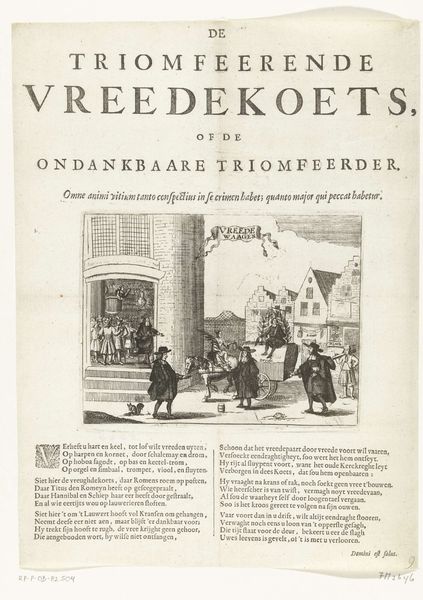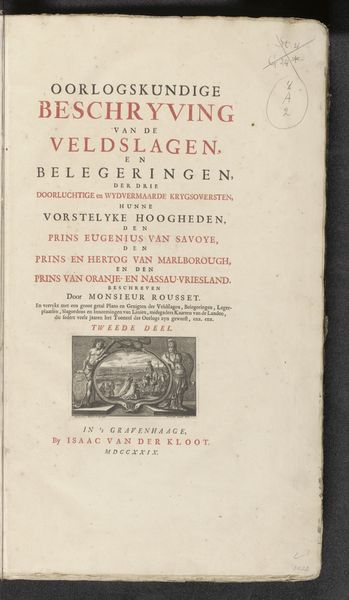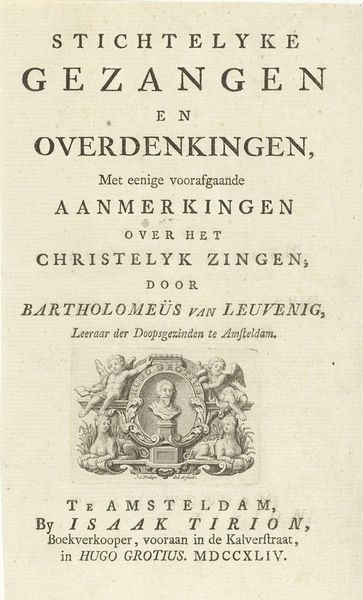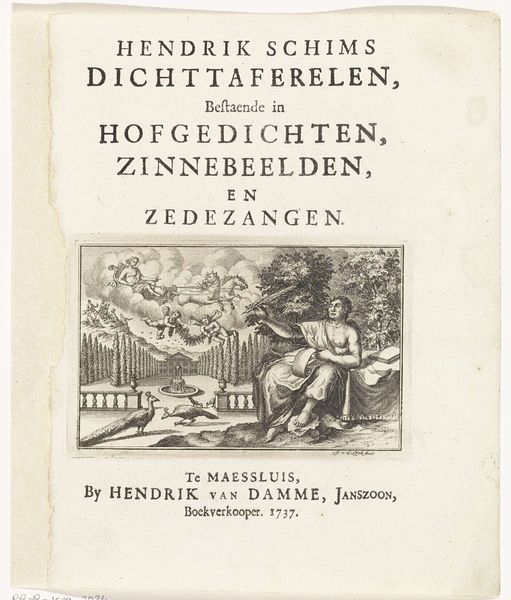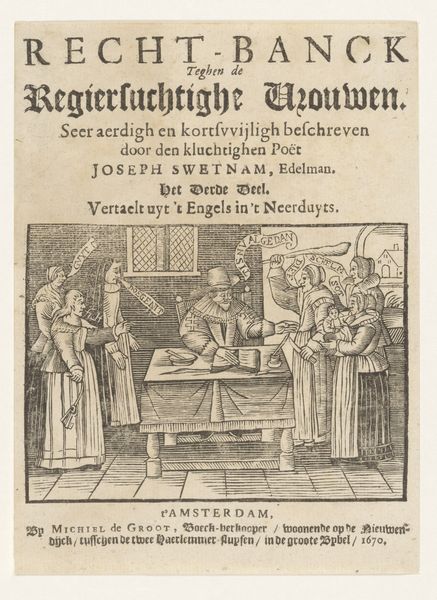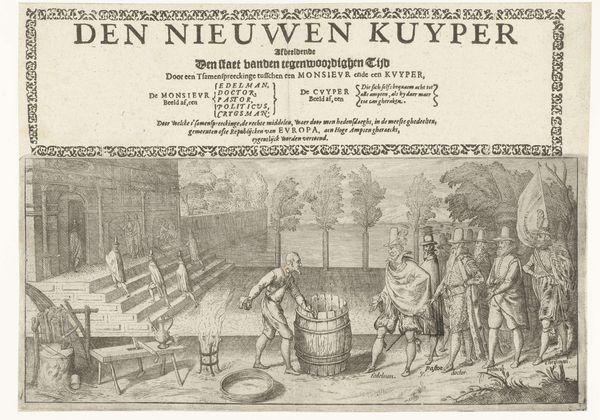
Titelpagina voor: Ordonantie ende Instructie op de Stijl ende Maniere van Procederen voor den Hove van Utrecht., 1706 1706
0:00
0:00
graphic-art, print, typography, engraving
#
graphic-art
#
baroque
# print
#
typography
#
stylized text
#
thick font
#
classical type
#
engraving
Dimensions: height 195 mm, width 138 mm
Copyright: Rijks Museum: Open Domain
Editor: Here we have a title page from 1706, “Ordonantie ende Instructie op de Stijl ende Maniere van Procederen voor den Hove van Utrecht," or "Ordinance and Instruction on the Style and Manner of Proceedings for the Court of Utrecht," made using engraving and typography. The title feels very declarative, yet somewhat difficult to read, in the Baroque style. What strikes you when you look at this piece? Curator: This engraving offers us a fascinating lens through which to examine power structures and societal expectations of the 18th century. I see a deliberate attempt to legitimize legal authority through classical allegorical figures, rendered with detailed precision. Consider the implications of Justice wielding her sword alongside what appears to be Mercury, the messenger, seemingly offering balance with his scales and caduceus. The text also underlines class privilege in this period. Who do you think this message was aimed at? Editor: I suppose those in positions of authority and wealthy landowners like the person named on the cover. But do you think these figures of Justice would have resonated with commoners at the time? Curator: That's the critical question. While intended to project impartiality, this idealized imagery may have inadvertently highlighted the vast chasm between the ruling elite and the experiences of everyday people. Also, what kind of justice did these 'commoners' have, if any at all? How complicit is the publisher? And could this "thick font" indicate this attempt at imposing order? Editor: It's sobering to think about how these symbols of law and order could be interpreted differently based on one's position in society. I never considered this piece beyond face value. Curator: Exactly! It's a potent reminder that art rarely exists in a vacuum. This engraving is just one more example that reflects social and historical forces that shape, and often distort, our perceptions of justice and governance, don't you think?
Comments
No comments
Be the first to comment and join the conversation on the ultimate creative platform.
